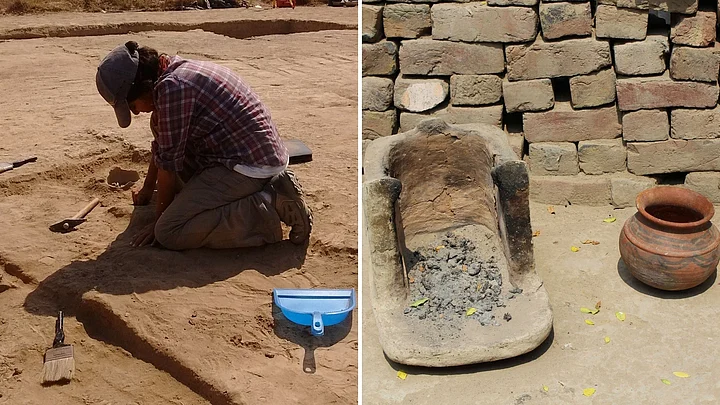The meat of animals such as buffalo, sheep, and goat, as well as dairy products were dominant in the diet of the people of Indus Valley, finds a new study published on Wednesday, 9 December, in the ‘Journal of Archaeological Science’.
Titled Lipid residues in pottery from the Indus Civilisation in northwest India, the study was led by Akshyeta Suryanarayan as a part of her PhD thesis at the University of Cambridge.
The study analyses the food habits of the people of Indus Valley, based on the lipid residue found in pottery and ceramic vessels from the then Harappan sites in Haryana and Uttar Pradesh.
The study has been co-authored by former vice-chancellor of Pune’s Deccan College and renowned archaeologist Professor Vasant Shinde and Professor Ravindra N Singh of the Banaras Hindu University.
Cultural Preference for Beef Consumption
The study revealed that “high proportions of cattle bones may suggest a cultural preference for beef consumption.”
“Out of domestic animals, cattle/buffalo are the most abundant, averaging between 50% and 60% of the animal bones found, with sheep/goat accounting for 10% animal remains. The high proportions of cattle bones may suggest a cultural preference for beef consumption across Indus populations, supplemented by consumption of mutton/lamb,’’ the study said.
Speaking to The Indian Express, Suryanarayan, who is working with the French National Centre for Scientific Research, said:
“This study is unique in that it has gotten to look at the contents of the vessels. Normally there would be access to seeds or plant remains. But through the lipid residue analysis, we can confidently ascertain that consumption of beef, goat, sheep and pig was widespread, and especially of beef.”
At Harapa, 90 percent of cattle were kept alive until they were at least 3 years old, revealing that the females were used for dairy and male for traction, it said.
The pattern is similar at the sites in northwest India, where domestic and wild mammals, and smaller proportions of birds, reptiles, riverine fish, and molluscs were consumed," the study added.
